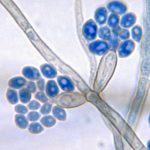Diesel exhaust fumes pose health risks to firefighters. Diesel powered firetrucks emit harmful diesel exhaust when entering and leaving the fire station. These fumes must be properly controlled in order to prevent continuous exposure to firefighters1. Without proper diesel exhaust fume control, the hazardous fumes may enter living quarters at the fire station increasing… Learn More
Particulate Control for Eyeglass Lens Production
Reflective surfaces have been used to magnify and enhance vision since the early 1200s with the discovery of the magnifying glass made of quartz and beryl lenses1. Glasses were introduced to the general public by Alessandro di Spina. Due to high demand, quartz and beryl lenses were quickly replaced with glass. Modern day eyeglass lens… Learn More
Fume & Particulate Control for Forensics 3D Printing
Forensics 3D Printing In recent years, forensics 3D printing has increased usage in the forensics and law enforcement fields due to more economically-priced printers, lasers, and scanners. Additionally, the seemingly infinite printing possibilities and uses in these fields have led to greater adoption of this technology. Historically, law enforcement and court officials have relied heavily… Learn More
Filter Center & Benefits of Changing Your Filter
New Filter Center Our new Filter Center makes it simple and easy to place filter orders! Simply fill out the Reorder Filters Form and our team will contact you within 24 hours. Your filter type can conveniently be found on the side of the control box or on the filter itself. The Filter Center can… Learn More
Mycology Culture Sampling & Testing
Mycology, a branch of biology, focuses on the study of fungi. Heinrich Anton de Bary, a research botanist from Germany in the 1800s, is credited for his ground-breaking research on fungi-related plant diseases, which laid the foundation for modern mycology and plant pathology. The field of mycology is vast and includes a wide array of… Learn More
Introducing our New Ductless Fume Hood: Sentry AirHawk
Have you ever been working under a fume hood and desired to have a brighter adjustable light or the ability to change the fan speed depending on the application requirements? With the Sentry AirHawk, the operator has more options for adjustments with the centralized control panel. The control panel features an adjustable light and fan… Learn More
What is a Ductless Fume Hood?
A ductless fume hood is a contained working space that uses powerful negative airflow to pull harmful fumes, vapors or particulate away from the operator’s respiratory zone and protects the operator and the environment from exposure. How does a Ductless Fume Hood work? Ambient Air is drawn into the hood and mixed… Learn More
Taxidermy Fume Control
Taxidermy, the artistic and scientific process of preserving animals’ bodies, utilizes a wide variety of chemicals that can have lasting health effects if not used properly. Taxidermy procedures vary depending on the taxidermist’s preferences, type of animal, and the type of preservation but all types must take proper precautions with fume control to ensure safety…. Learn More
Plasma Cutting Fume Extractor
At Tulsa Welding School, located in North Houston, test pieces for student use are cut using a plasma cutting system. These test pieces are 3” x 6” and are cut all day during two shifts from 8 AM to 11 PM. Because of the high use of cutting, the plasma cutting room is very dirty… Learn More
What are Mist Collectors?
Mist collectors filter the air in machine shops in order to remove harmful oil mist from CNC machines, milling and grinding processes. These systems are commonly used for CNC machine shops to eliminate oil mist. However, they can also be used to collect and filter systems with coolant mist, water mist or other oil mist…. Learn More

 Made in the USA
Made in the USA




